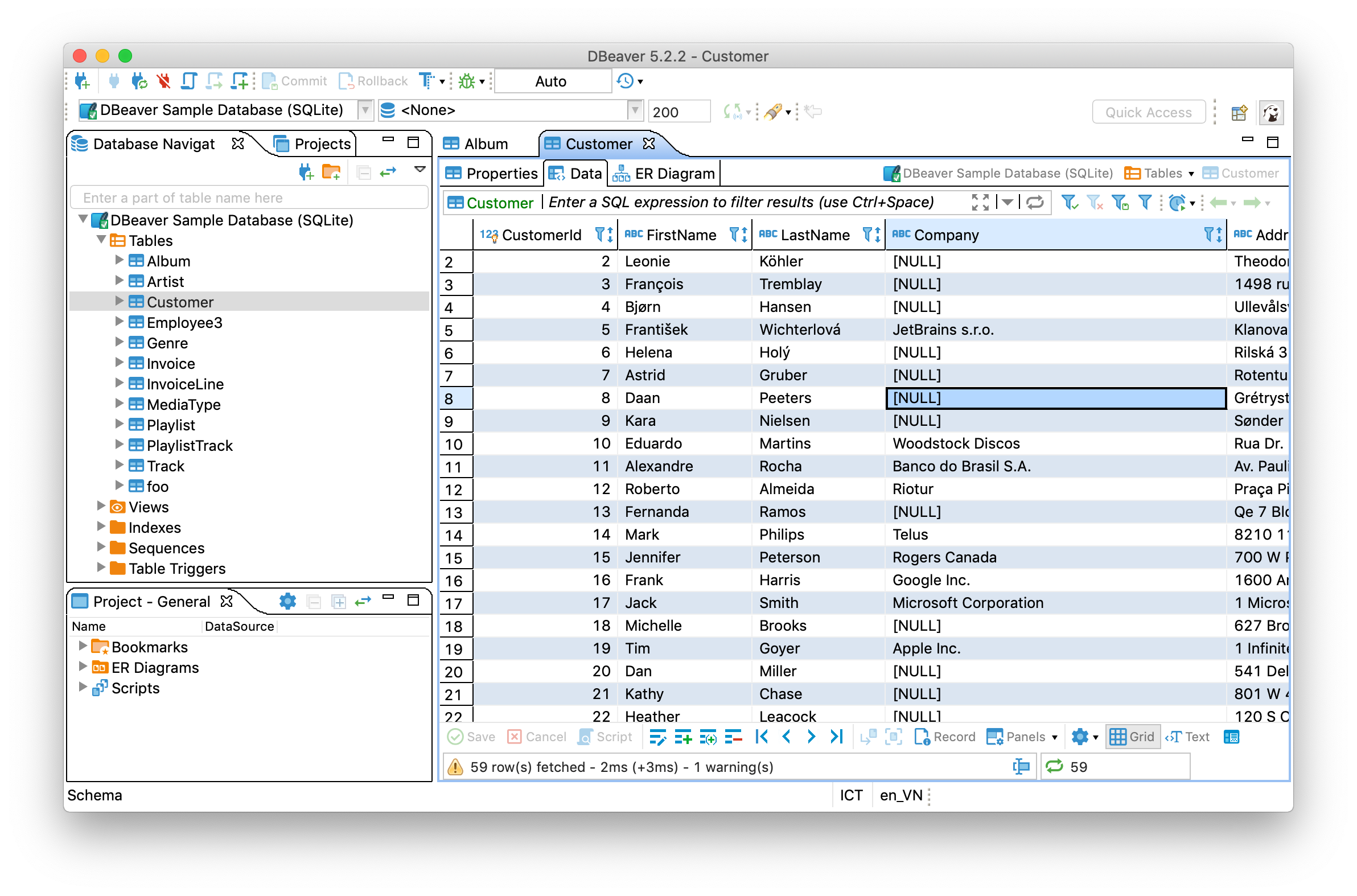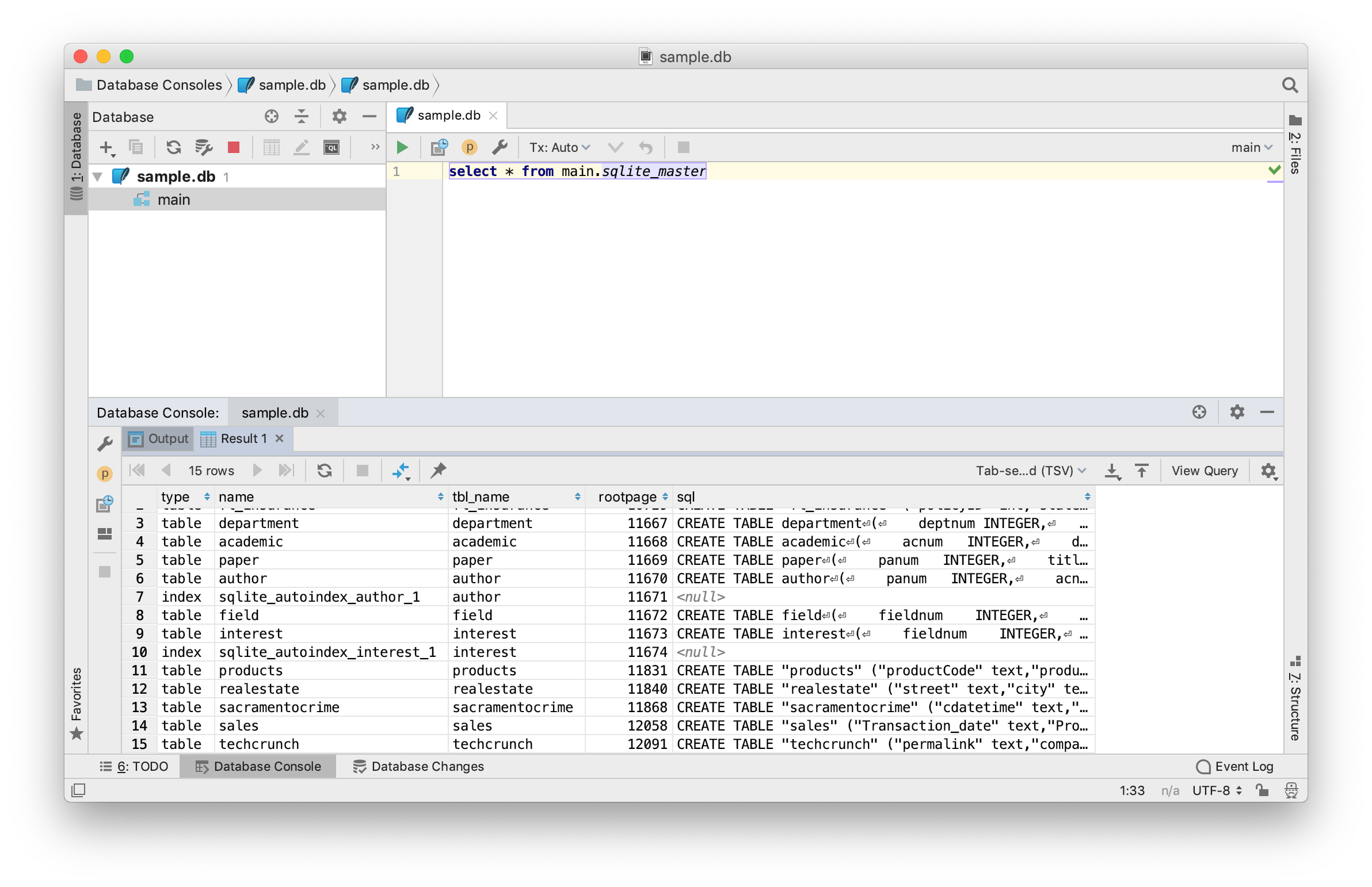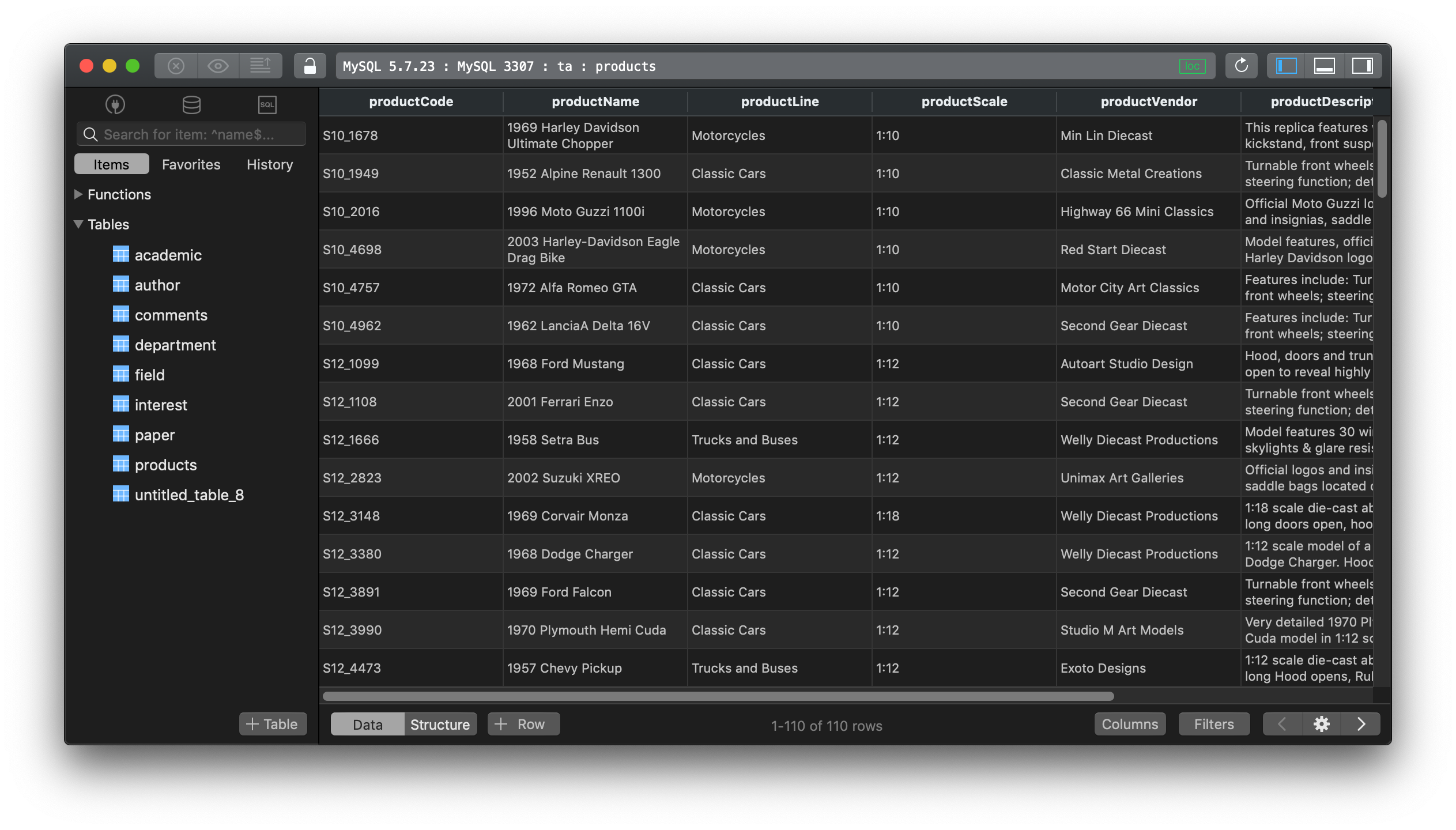DBeaver vs DataGrip vs TablePlus Comparison
In this post, we are going to compare three database GUI clients: DBeaver, DataGrip, TablePlus; and capture some pros and cons of each tool.
1. DBeaver
DBeaver provides a powerful database client, but a bit overwhelming.
-
Supported platforms: DBeaver works on all platforms supported by Eclipse framework, previously Windows, Linux, MacOS, Solaris, AIX, HP-UX. Starting from version 4.2, it limited its support to Windows, MacOS, and Linux only.
-
Supported Drivers: DBeaver community version can work with any database server which has JDBC driver (which means a lot of databases): MySQL, PostgreSQL, MariaDB, SQLite, Oracle, to DB2, SQL Server, Sybase, MS Access, Teradata, Firebird, Derby, etc. The enterprise adds support for non-JDBC data sources (WMI, MongoDB, Cassandra, Redis).
-
Pricing: DBeaver has a community version (DBeaver CE) which is free and open source. There’s also an enterprise edition (DBeaver EE) with more driver support, more advanced features and dedicated customer support for enterprises.

Pros:
- Cross-platform
- Multiple drivers support
- Assigning connection color
- Entity-relationship diagrams are available
- Built-in reformat SQL
Cons:
- It runs on a Java virtual machine, eats up a lot of RAM while running.
- Confusing icon design and somewhat unintuitive. Sometimes you don’t know where to look for what you need.
- Autocomplete is slow, and not so smart.
2. DataGrip
DataGrip is a multi-engine database integrated development environment (IDE) designed by JetBrains that enables developers to execute queries intelligently and perform efficient schema navigation.
-
Supported platforms: DataGrip is cross-platform. It works well on macOS, Linux, and Windows.
-
Supported Drivers: DataGrip supports a whole lot of databases: Postgres, MySQL, Oracle, SQL Server, Azure, Redshift, SQLite, DB2, H2, Sybase, Exasol, Derby, MariaDB, HyperSQL, Clickhouse.
-
Pricing: DataGrip doesn’t have a community version. You can download and use the free trial for 30 days, then you need to pay for a subscription service. It costs $8.9/mo for an individual and $19.9/mo/user for business.

DataGrip provides robust tools that streamline SQL code writing and make the entire process more efficient.
Pros:
- It supports multiple drivers
- It has smart context-sensitive and schema-aware code completion.
- A visual table editor lets you add, remove, edit, and clone data rows.
- It has version control support
- Refactoring support
Cons:
- It’s not user-friendly. It takes time to learn how to use it.
- It doesn’t run fast, compared to similar tools. It will be very sluggish when working with high-volume databases. It can use up to several GB’s of memory.
TablePlus
With a native build and a lightweight size, TablePlus is a very handy database GUI Client.
-
Supported platforms: TablePlus is built native for each platform. It started out with a native version for Mac, then another version for Windows, and a version for Linux was introduced recently as an alpha release. It also has an iOS version.
-
Supported Drivers: TablePlus supports a handful of relational databases: MySQL, PostgreSQL, SQLite, Microsoft SQL Server, Amazon Redshift, MariaDB, CockroachDB, Vertica, Oracle; and two popular NoSQL databases: Cassandra and Redis.
-
Pricing: TablePlus has a free version with full set of features which you can download and use forever, but there are some usage limitations. If you use it heavily, the license costs $59 to remove all those limitations.

Pros:
- Native build for each platform so it’s fast, lightweight, and stable.
- Clean and simple interface.
- Multiple drivers support
- Multiple conditions data filter
- Queries history and keyword binding favorite.
- Streaming results and async loading to show queries results faster and doesn’t block the UI.
- Very quick inline editing for table data and structure, you also can edit query results directly.
- Smart query editor with highlight syntax, instant autocomplete, SQL reformat.
- Multiple carets
- A plugin system to extend the app.
- Quick support. TablePlus releases new updates regularly and responds to users’ requests almost immediately.
Cons:
It currently lacks of some advanced features such as ER Diagram, database compare tool to Diff and Sync, etc.
4. Conclusion
Go with DataGrip if you:
- Are comfotable with the cost
- Need a full-featured tool
- Don’t mind the slugginess
Go with DBeaver if you:
- Work with all kinds of databases
- Prefer a an old-fashioned design with all function buttons on the UI.
- Need a tool to get the job done
Go with TablePlus if you:
- Are a fan of native experience
- Work with multiple databases
- Want a modern design with better usability
- Want quick support & development cycle.